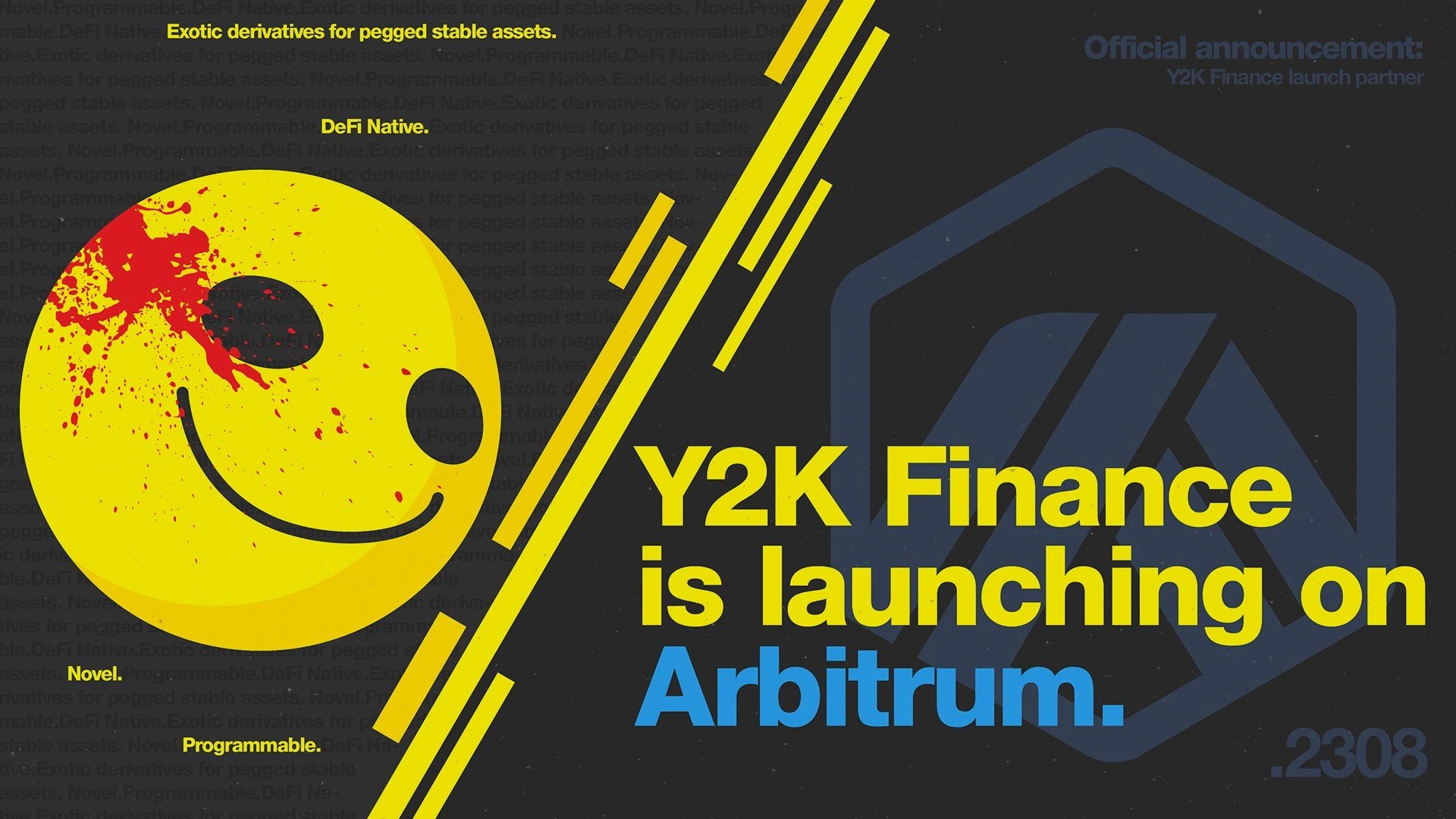위키 구독하기
Share wiki
Bookmark
Y2K Finance
Y2K Finance
Y2K Finance는 Arbitrum 체인에서 운영되는 DeFi 플랫폼으로, 사용자에게 이국적인 페깅된 자산의 디페깅에 대한 투기 또는 헤지 기회를 제공합니다. 이 암호화폐 기반 구조화 상품은 사용자가 고정된 가치에서 벗어날 수 있는 자산으로부터 자신을 보호하거나 이익을 얻을 수 있는 독특한 방법을 제공합니다. [1][2]
개요
Y2K Finance는 2022년 8월 26일 Arbitrum 네트워크에서 공식적으로 출시되었습니다. 이 플랫폼은 스테이블코인 및 토큰 래퍼와 관련된 위험을 사고파는 시장을 제공합니다. 사용자는 프리미엄을 지불하여 디페깅 이벤트에 대한 보호를 선택하거나 위험을 판매하여 투기적 포지션을 취할 수 있습니다. 위험 수준은 다양하며, 위험이 높은 옵션일수록 더 큰 보상을 제공합니다. [3][4]
이 플랫폼은 각각 한 달 동안 지속되는 에포크를 통해 운영되며, 위험 금고에 예치된 자금은 각 에포크가 끝날 때까지 잠겨 있습니다. 자금이 잠기면 반대체 가능 토큰으로 표시되며, 예치자의 담보 및 보상의 일부와 거래할 수 있습니다. Y2K는 청산 이벤트의 수익에 대한 추가 유동성 옵션 및 노출을 제공하는 "Wildfire" 및 "Tsunami"라는 두 가지 추가 상품도 보유하고 있습니다. 이 플랫폼은 DAI, USDC 및 wBTC를 포함한 다양한 자산에 대한 지원과 함께 Arbitrum에서 처음 출시되었습니다. [3][4]

Earthquake
Earthquake는 기존의 재난 채권(CAT)에 대한 새로운 접근 방식을 도입하는 금융 상품으로, 사용자에게 다양한 페깅된 자산과 관련된 변동성 위험을 헤지, 투기 및 인수할 수 있는 플랫폼을 제공합니다. 지진이나 허리케인과 같은 미리 정해진 재난 위험 발생 시 지급되는 기존 CAT 채권과 달리 Earthquake는 스테이블코인, 유동성 래퍼 및 기타 DeFi 파생 상품의 디페깅 이벤트에 중점을 둡니다. 이 플랫폼을 통해 사용자는 Hedge 금고에 ETH 담보를 예치하고 Y2K 토큰을 받아 이러한 자산의 변동성으로부터 자신을 보호할 수 있습니다. 이 플랫폼은 페깅된 자산 가격을 모니터링하기 위해 Chainlink 오라클을 활용하며, 디페깅 이벤트 발생 시 5%의 수수료를 부과합니다. [5][14]
위험 금고
Earthquake는 사용자가 Risk 금고에 ETH를 예치하여 디페깅 위험 시장에 참여할 수 있는 플랫폼을 제공합니다. 사용자는 Risk 금고에 ETH를 예치함으로써 디페깅 보험의 인수자 역할을 하며, Hedge 금고 예치금에서 수집된 프리미엄의 비례 공유를 받을 자격이 있습니다. Risk 금고에 예치하면 반대체 가능 ERC-1155 토큰이 발행되며, 이는 예치금 영수증 역할을 하며 Wildfire 출시 후 거래 가능합니다. 금고가 디페깅되지 않을 경우, Risk 금고 예치자는 Hedge 금고 예치금의 비례 공유를 받게 됩니다. 금고가 디페깅될 경우, Risk 금고 예치자는 Hedge 금고 예치자에게 원금이 이전되는 것 외에도 Hedge 금고 예치금의 비례 공유를 받게 됩니다. [6][7]
헤지 금고
페깅된 자산의 변동성에 대해 헤지하려는 사용자는 Hedge 금고에 ETH를 예치하여 그렇게 할 수 있습니다. 사용자는 Hedge 금고에 ETH를 예치함으로써 보험 계약자 역할을 하며, 디페깅 이벤트 발생 시 Risk 금고 예치금의 비례 공유를 받을 자격이 있습니다. Hedge 금고에 예치하면 반대체 가능 ERC-1155 토큰이 발행되며, 이는 예치금 영수증 역할을 하며 Wildfire 출시 후 거래 가능합니다. 금고가 디페깅되지 않을 경우, Hedge 금고 예치자는 지불된 프리미엄을 Risk 금고 예치자에게 이전합니다. 금고가 디페깅될 경우, Hedge 금고 예치자는 지불된 프리미엄을 Risk 금고 예치자에게 이전하고 Risk 금고 예치금의 비례 공유를 받게 됩니다. [6][7]
행사가
Earthquake는 USDC, USDT, DAI, FRAX 및 MIM을 포함한 지원되는 페깅된 자산의 가격을 모니터링하기 위해 Chainlink 오라클을 사용합니다. Chainlink 오라클이 특정 금고의 행사가에 도달했음을 나타내면 에포크가 종료되고 금고가 닫히며, 이에 따라 Risk 금고 예치금이 Hedge 금고로 이전됩니다. 프로토콜은 다음과 같은 시나리오에서 5%의 수수료를 부과합니다. 디페깅 이벤트 발생 시 Hedge 금고 예치금의 5% 및 Risk 금고 예치금의 5%. 페깅이 유지되면 수수료가 부과되지 않습니다. [7][8]
잘못된 내용이 있나요?
